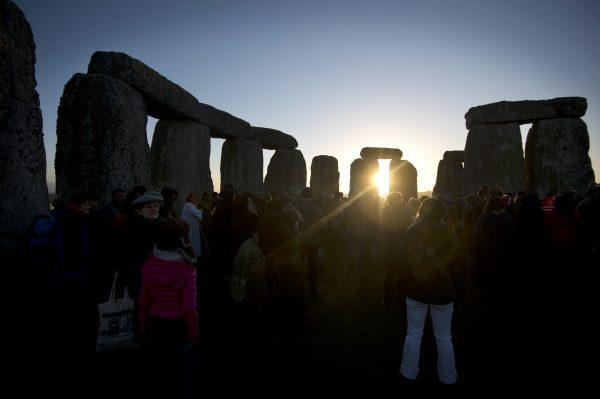Winter Solstice Approaches: The Darkest Day of the Year in the Northern Hemisphere
This Saturday marks the winter solstice, bringing the year’s shortest day and longest night to the Northern Hemisphere—perfect for enjoying holiday lights and cozying up under warm blankets.
For those seeking more sunlight, consider traveling to the Southern Hemisphere, where it’s summer. Alternatively, you can wait patiently: starting Sunday, the days in the Northern Hemisphere will gradually lengthen each day until late June.
The annual alterations in sunlight as the Earth orbits the sun have been recognized by humanity for centuries. Historical sites like Stonehenge in England and the Torreon at Machu Picchu in Peru were constructed to align with the solstices.
Here’s what you should understand about how the Earth’s journey around the sun segments the year.
What Is the Solstice?
As the Earth revolves around the sun, it does so on a tilt. For the majority of the year, the Earth’s axis leans either toward or away from the sun. This results in uneven distribution of the sun’s warmth and light between the northern and southern parts of the planet.
The solstices signify the moments in the year when the Earth is tilted at its greatest angle toward or away from the sun. This leads to significant differences in sunlight received by each hemisphere, making day and night the most unequal.
During the winter solstice in the Northern Hemisphere, the upper half of the Earth is angled away from the sun, resulting in the shortest day and longest night of the year. This event occurs between December 20 and 23.
Conversely, during the summer solstice, the Northern Hemisphere is pointed toward the sun, resulting in the longest day and shortest night of the year. This solstice occurs between June 20 and 22.

Revellers celebrate the pagan festival of ‘Winter Solstice’ at Stonehenge in Wiltshire in southern England on Dec. 21, 2012. Ben Stansall/AFP/Getty Images
What Is the Equinox?
During the spring and fall equinoxes, the Earth’s axis is positioned such that both hemispheres receive equal sunlight.
The term equinox stems from two Latin words that mean equal and night, as on the equinox, day and night duration is nearly identical—although one may experience a few extra minutes based on geographical location.
The spring equinox in the Northern Hemisphere occurs between March 19 and 21, depending on the year. Meanwhile, the fall equinox takes place between September 21 and 24.
What’s the Difference Between Meteorological and Astronomical Seasons?
These terms define two distinct methods of segmenting the year.
Meteorological seasons are categorized by weather patterns and divide the year into three-month segments based on annual temperature cycles. According to this calendar, spring commences on March 1, summer on June 1, fall on September 1, and winter on December 1.
Astronomical seasons, on the other hand, are related to the Earth’s orbit around the sun.
Solstices herald the start of summer and winter, while equinoxes signify the beginning of spring and autumn.





